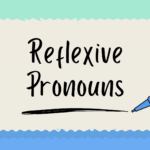Let’s chat about pronouns! These little words plays an important role in how we talk to each other. We’ll focus on two types: subject pronouns and object pronouns. Don’t worry, I’ll keep it simple and give you some examples to make it crystal clear!
What are Subject Pronouns?
Subject Pronouns:
Subject pronouns are like superhero words that replace nouns when they’re the main character in a sentence. Instead of saying the same noun over and over, we use subject pronouns like “I,” “you,” “he,” “she,” “it,” “we,” and “they.” These words tell us who or what is doing the action.
| Person | Singular | Plural |
|---|---|---|
| 1st person | I | We |
| 2nd person | You | You |
| 3rd person | He/She/It | They |
What are Object Pronouns?
Object Pronouns:
Object pronouns are like sidekick words, stepping in for nouns that aren’t the main character but are still part of the action. They’re used when something or someone is receiving the action.
| Person | Singular | Plural |
|---|---|---|
| 1st person | Me | Us |
| 2nd person | You | You |
| 3rd person | Him/Her/It | Them |
How to Use Subject Pronouns?
1. At the Start of a Sentence:
- Example: I love pizza.
- Example: They play soccer.
2. After Words Like ‘am,’ ‘is,’ ‘are’:
- Example: The winner is she.
- Example: The best option is they.
3. Giving Orders or Suggestions:
- Example: You, pick up your toys.
- Example: Let us help you.
How to Use Object Pronouns?
1. After Action Verbs:
- Example: John called me yesterday.
- Example: She loves him a lot.
2. After ‘to,’ ‘for,’ or ‘with’:
- Example: The gift is for us.
- Example: I shared my candy with them.
3. When Renaming the Subject:
- Example: The winner is her.
- Example: The best option is them.
Examples for Better Understanding
Subject Pronoun Examples:
- She dances well.
- We study together.
- It is a beautiful day.
Object Pronoun Examples:
- John helped me with homework.
- They made a card for us.
- I saw her at the park.
Frequently Asked Questions (FAQs)
Q1: What are subject pronouns and object pronouns, and how are they used?
Subject pronouns, like “I” and “they,” replace nouns as the main characters in sentences, indicating who or what is performing the action. Object pronouns, such as “me” and “them,” substitute for nouns receiving the action. They’re crucial for clear and efficient communication, enhancing sentence flow and avoiding repetition.
Q2: When should I use subject pronouns?
Use subject pronouns at the beginning of a sentence, after words like “am,” “is,” “are,” and when giving orders or suggestions.
Q3: When do I use object pronouns?
Object pronouns come into play after action verbs, after words like “to,” “for,” or “with,” and when renaming the subject in a sentence.
Q4: Can you explain the difference between subject and object pronouns?
Yes! Subject pronouns replace nouns as the main character doing the action, while object pronouns replace nouns that are part of the action but not the main character.
Q5: Are there different subject and object pronouns for singular and plural?
Yes, both subject and object pronouns have forms for singular and plural. Examples include “I” and “we” for subject pronouns, and “me” and “us” for object pronouns in the first person.
Q6: How do subject and object pronouns make sentences clearer?
Subject and object pronouns avoid unnecessary repetition of nouns, making sentences more concise and engaging. They help streamline communication by indicating who or what is involved in the action.
Conclusion
By understanding subject pronouns and object pronouns talking and writing gets better. We use subject pronouns for the main character and object pronouns for the supporting roles. The examples should help you see how to use them in everyday sentences. So go ahead, try using these pronouns, and watch your sentences become more lively and clear!


